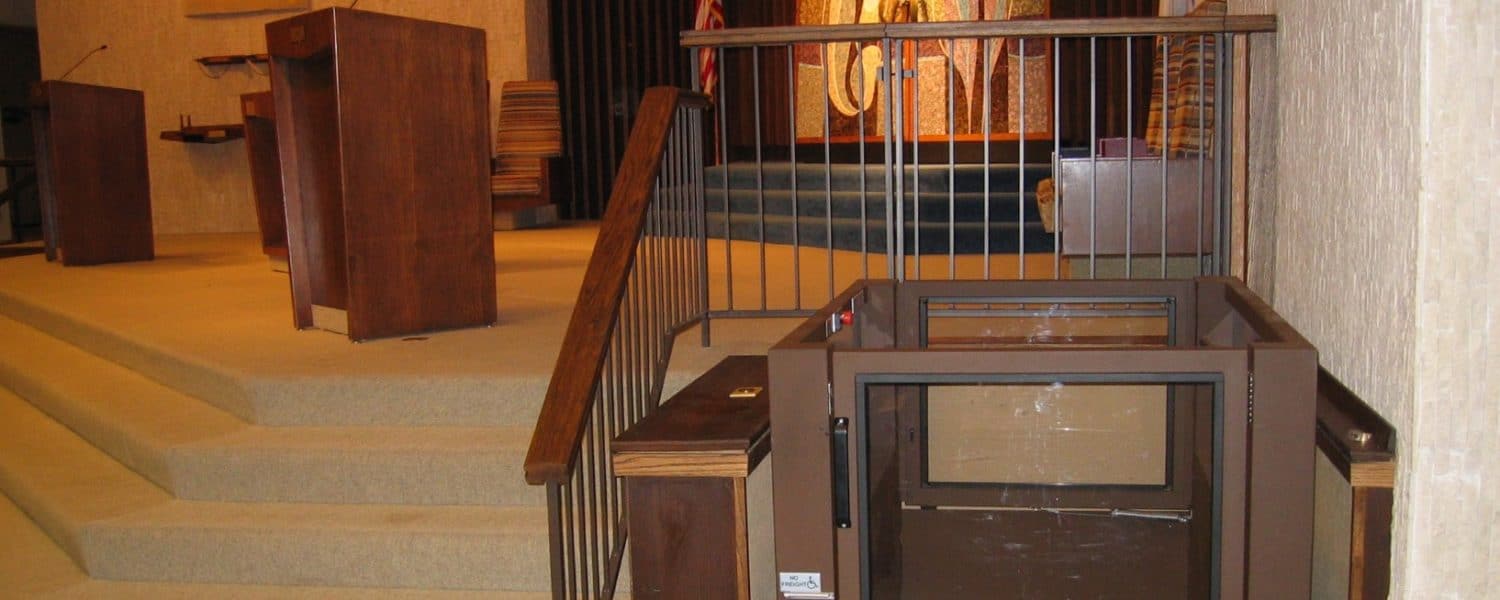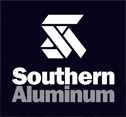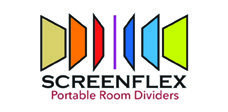One challenge for church, synagogue, and religious facility managers tasked to meet the Americans with Disabilities Act (ADA) has been offering full access to elevated areas in centers of faith.
These areas can range from stages and raised platforms for the worship leaders to balconies or stadium style auditorium seating for the congregation, to second floor sanctuaries not served by a traditional elevator. In such cases, ramps and one-floor elevators often require too much space to be feasible, particularly in older buildings.
Although wheelchair lifts are available to assist those with mobility issues, most are limited to a 60-inch or less maximum vertical lift, which is suffiacient for a stage, but not a balcony or second floor.
For lift platforms that are capable of reaching higher, many are noisy and have outdated designs. They can also be too tightly enclosed for those uncomfortable in small spaces, and require demolition of floors or walls to hide internal lift machinery.
Now, however, industry advances promise quieter, ADA compliant wheelchair lifts that offer extended vertical rise as well as dignity to their users with minimal installation requirements.
Access Alternatives
If there is enough floor space, building a ramp is probably the simplest solution for providing access to those using wheelchairs, walkers, crutches, canes or other assistive devices.
However, ramps typically need to be one foot long for every inch of vertical rise, so a 48-inch high stage requires a 48-foot long ramp. This is impractical in space-restricted, older faith-based facilities, and for those with balconies, stadium-style seating, and second floors to access. Besides being unsightly, ramps can also be difficult to navigate due to the incline.
Installing a traditional elevator is another option, but can be costly and usually requires both overhead clearance for a machine room and demolition to flooring to put machinery below. For these reasons, a dedicated elevator that only goes up one floor is generally not cost-effective or feasible unless access to multiple floors is required.
Although extended rise wheelchair lifts are a good alternative, traditional devices have a number of drawbacks. Most require up to 6 inches of machinery underneath so require demolition of the floor to create the space to hide machinery, or placing it in a raised platform above the floor with a flip down ramp, or sometimes both.
Some lift machine cabinets stand on the side of the unit and may even have sheet metal all the way around. This limits visibility in and out of the unit, which can be a challenge for anyone that may be claustrophobic, or for religious facility managers and administrators that want to monitor the safety of patrons using the lift.
Typical lifts operating with screw or worm gear drives can also be very noisy and disruptive. The devices can generate a loud, grinding sound similar to a high-speed drill or trash compactor. This not only puts an unwelcome focus on those using the lift, but also detracts from sermons, prayers, meditation, and other religious services.
Fortunately, religious facility managers are finding that design improvements in extended rise wheelchair lifts are making ADA access safer, easier, and more inclusive, with less intrusive renovation to existing structures.
Unlike excessively loud wheelchair lifts utilizing screw or worm gear drives, some advanced lifts such as the Clarity 16E by Ascension use a chain hydraulic drivetrain and vibration-isolating supports, which significantly reduce noise to take the spotlight off of those using the lifts and preserve spiritual decorum. When rising, for instance, the unit is about as loud as normal conversation (62dB @ 3 feet), and it is virtually silent when descending (< 2dB @ 3 feet).
Because the unit, a fully enclosed vertical wheelchair lift that can reach heights up to 168-inches, mounts directly on the floor this means that no equipment pit under the lift and no floor demolition is required, which is particularly important for historic religious structures or venues. Since the lift mounts directly on the floor with a very slim profile platform only 1/2-inch thick, the person in the wheelchair or using an assistive device also safely and easily enters at floor level without requiring a cumbersome fold-out entry ramp.
For tight renovation spaces, a lift with a narrow footprint can also mean the difference between a painless installation and major wall demolition to squeeze in the new lift. In this regard, the lift’s narrow 48-inch wide footprint allows the device to fit into existing structures without tearing down walls to make space. This is possible because the machine cabinet mounts up against the upper landing face wall, not the sides, making it at least 6 to 8 inches narrower than traditional lifts.
Because no side tower is required, the drive system attaches directly to the landing face, and the enclosure uses transparent panels which leave three sides clear for better sight lines in an out of the lift as well. This creates a more open, less enclosed feeling for those using the lift and enables better visual monitoring of members of the congregation for safety. Additionally, the transparency of the lift allows patrons to still view and participate in the worship program as desired.
Another safety feature included with the system is an ADA-compliant hands-free phone with auto dialer for two-way communication from the platform.
Beyond safe, quiet ADA compliance, faith-based facility managers and administrators will want to know that the wheelchair lift they depend on is built to last with minimal maintenance. While the industry typically offers a 1 to 3 year warranty on lift drivetrains, some advanced lifts now carry a standard drive train warranty of 20 years with 5 years on all other parts, which ensures better equipment longevity.
As religious institutions look to be ADA compliant and meet the needs of all of their members, extended rise wheelchair lifts will help them to safely meet access requirements in a dignified manner for a wider range of structures and facilities.
Ascension’s parent company, AGM Container Controls, Inc., was founded in 1970. In 1990, the Americans with Disabilities Act (ADA) was enacted to help remove barriers and empower people of all different levels of mental and physical abilities. In 1992, to help our nation fulfill the ADA, AGM began producing premium wheelchair lifts, www.ascension-lift.com.












